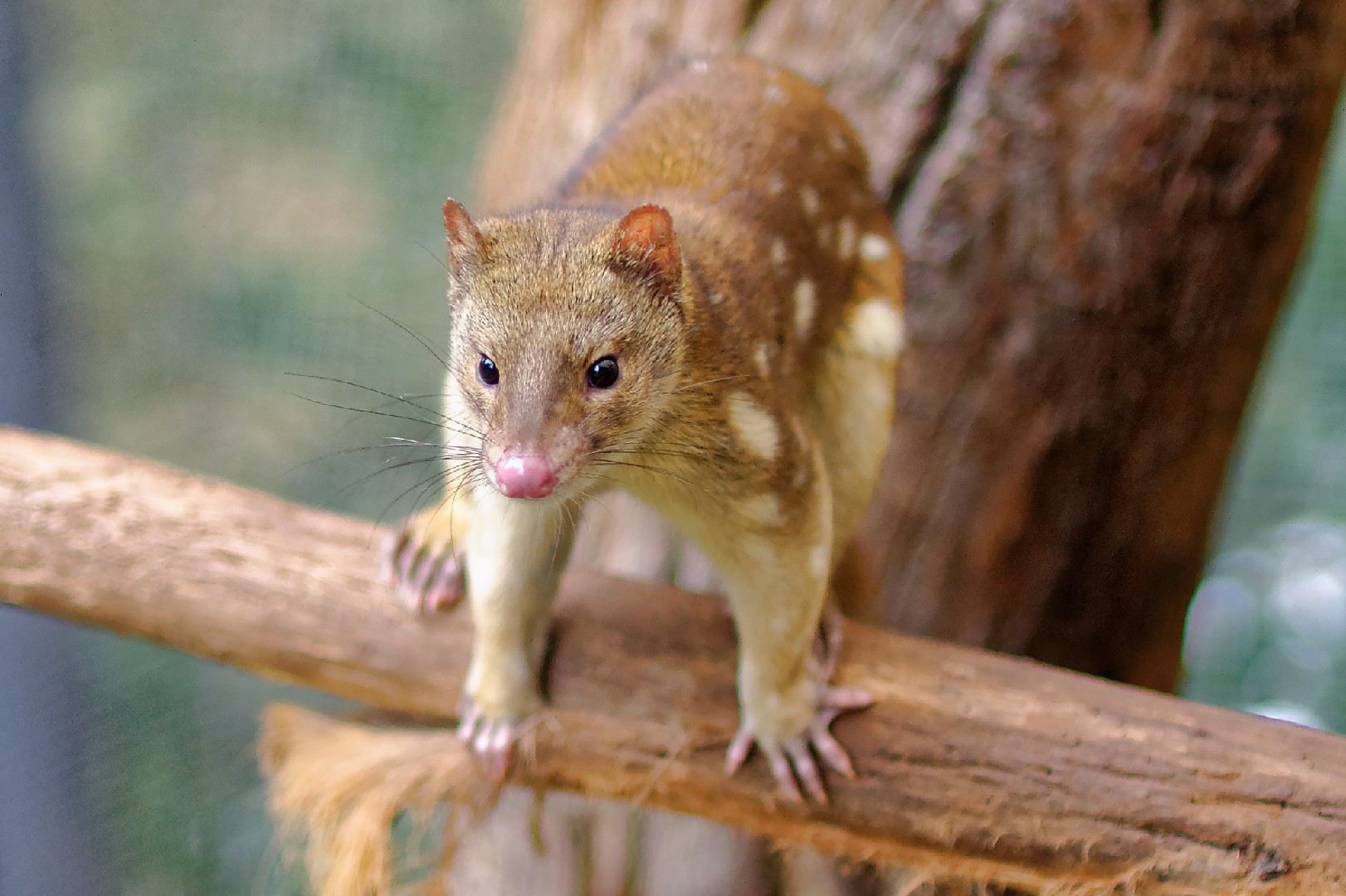Tiger quoll
A species of Quolls, Also known as Spotted quoll, Tiger cat Scientific name : Dasyurus maculatus Genus : Quolls
Tiger quoll, A species of Quolls
Also known as:
Spotted quoll, Tiger cat
Scientific name: Dasyurus maculatus
Genus: Quolls
Content
Description General Info
 Photo By Michael J Fromholtz , used under CC-BY-SA-4.0 /Cropped and compressed from original
Photo By Michael J Fromholtz , used under CC-BY-SA-4.0 /Cropped and compressed from original Description
The tiger quoll is the largest of the quolls. Males and females of D. m. maculatus weigh on average 3.5 and 1.8 kg, respectively, and males and females of D. m. gracilis weigh on average 1.60 and 1.15 kg, respectively. The next-largest species, the western quoll, weighs on average 1.31 kg for males and 0.89 kg for females. The tiger quoll has relatively short legs, but its tail is as long as its body and head combined. It has a thick head and neck and a slightly rounded and elongated snout. It has five toes on each foot, both front and hind, and the hind feet have well-developed halluces. Its long pink foot pads are ridged, an adaptation for its arboreal lifestyle. This makes up for the fact that its tail is not prehensile. The tiger quoll has a reddish-brown pelage with white spots, and colourations do not change seasonally. It is the only quoll species with spots on its tail in addition to its body. Its fur and skin are covered in orange-brown-coloured oil. The underside is typically greyish or creamy white. The average length of D. m. maculatus is 930 mm for males and 811 mm for females, respectively. For D. m. gracilis, the average length of males and females, respectively, is 801 and 742 mm. The tiger quoll has the second most powerful bite relative to body size of any living mammalian carnivore, exerting a force of 308 N (31.4 kgf). 
General Info
Lifespan
5-7 years
Diet
Tiger quoll is primarily a carnivorous marsupial, with a preference for mammals, particularly small mammals such as rodents. Its diet also contains birds, reptiles, fish, insects, and sometimes carrion.
Appearance
Tiger quoll is a medium-sized marsupial with a robust body, short legs, and a pointed snout. It is covered in rough fur that bears a distinctive black and creamy white spotted pattern. The tail is long and bushy and also exhibits a similar spotted pattern. There are no significant differences in appearance between genders or across various age groups.
Behavior
Tiger quoll is a primarily nocturnal and solitary mammal that exhibits a marked territorial behavior. It possesses a keen sense of smell used for hunting and as a defense mechanism. Tiger quoll is also known for its aggressive behavior when threatened, using its sharp teeth and claws. Uniquely, it takes a stand-to-fight approach rather than fleeing, demonstrating adaptation to survival in its natural habitat.
Population
Decreasing